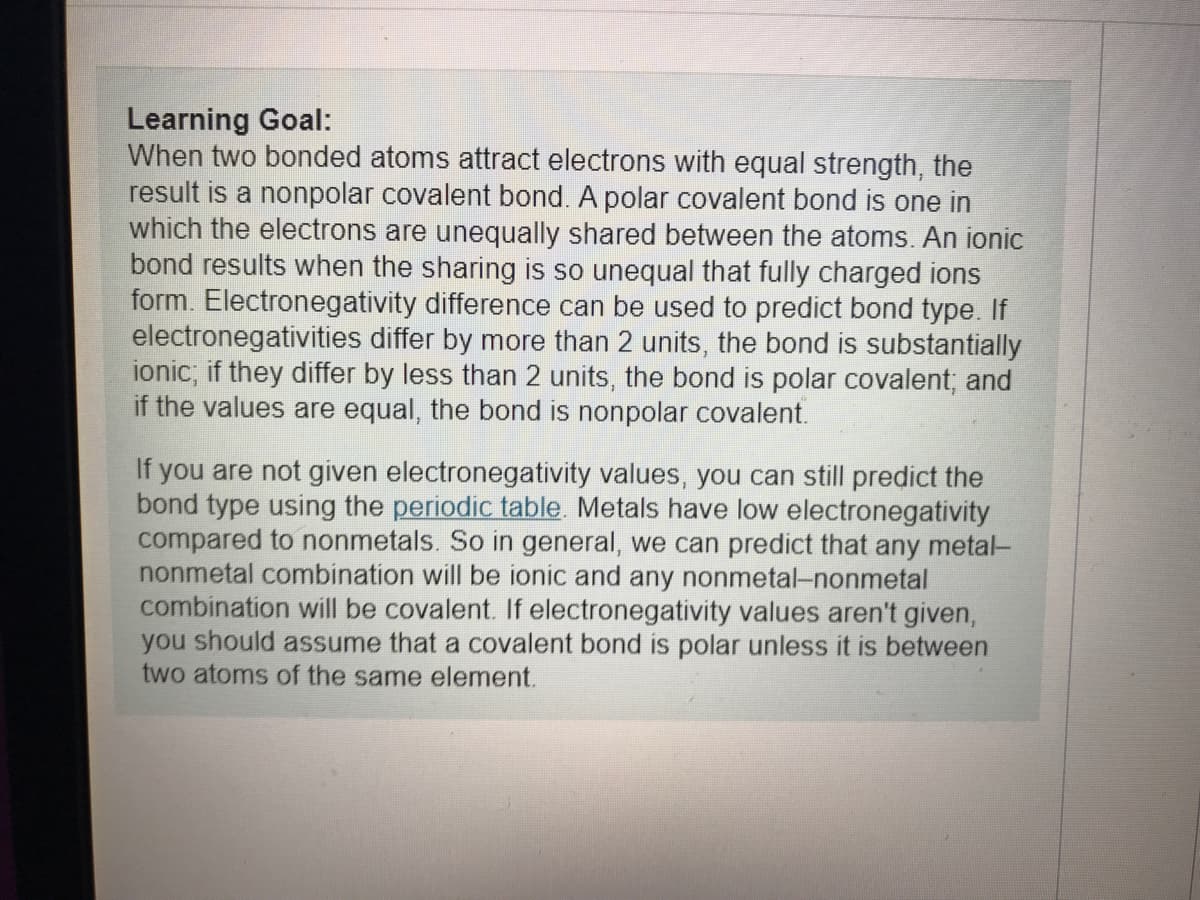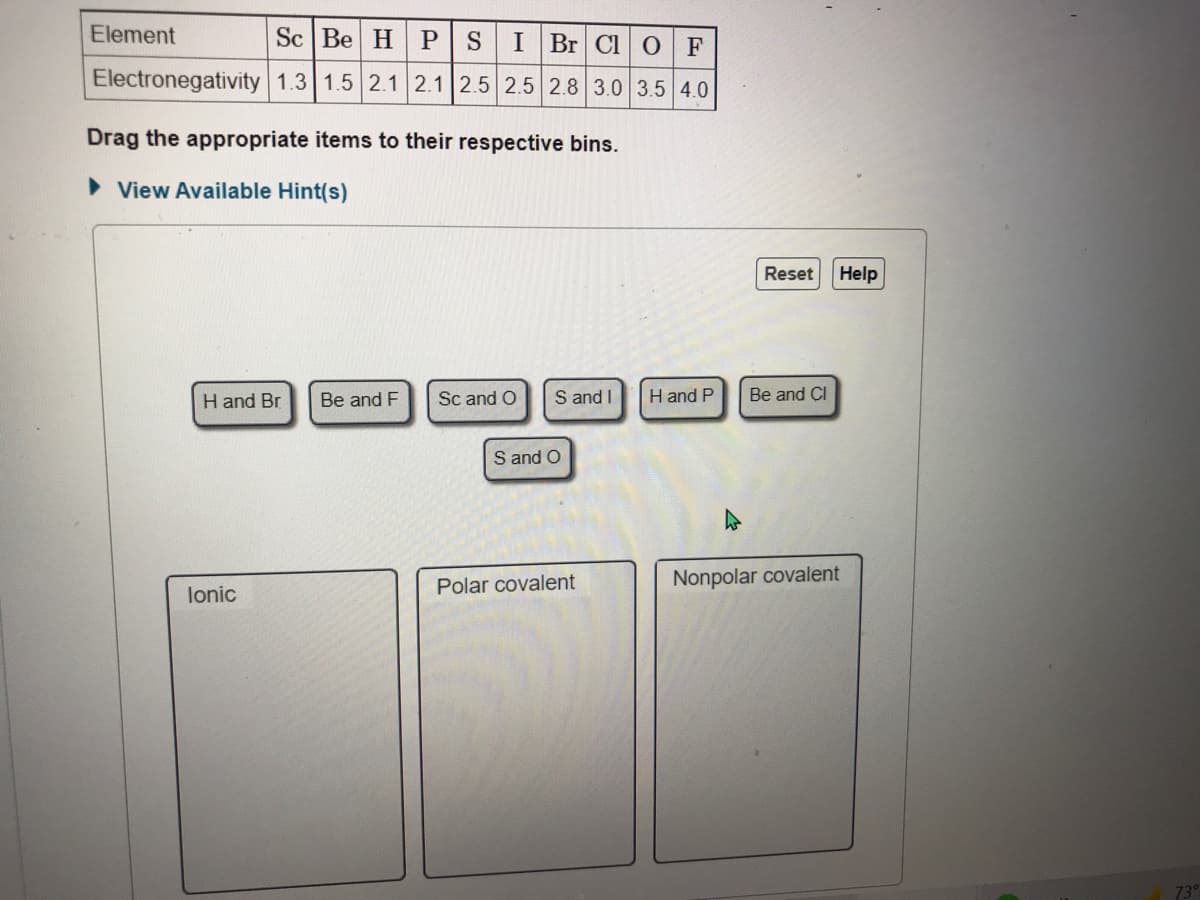Vity différence can be used to predict bond type. If electronegativities differ by more than 2 units, the bond is substantially ionic; if they differ by less than 2 units, the bond is polar covalent; and if the values are equal, the bond is nonpolar covalent. If you are not given electronegativity values, you can still predict the bond type using the periodic table. Metals have low electronegativity compared to nonmetals. So in general, we can predict that any metal- nonmetal combination will be ionic and any nonmetal-nonmetal combination will be covalent. If electronegativity values aren't given, you should assume that a covalent bond is polar unless it is between
Formal Charges
Formal charges have an important role in organic chemistry since this concept helps us to know whether an atom in a molecule is neutral/bears a positive or negative charge. Even if some molecules are neutral, the atoms within that molecule need not be neutral atoms.
Polarity Of Water
In simple chemical terms, polarity refers to the separation of charges in a chemical species leading into formation of two polar ends which are positively charged end and negatively charged end. Polarity in any molecule occurs due to the differences in the electronegativities of the bonded atoms. Water, as we all know has two hydrogen atoms bonded to an oxygen atom. As oxygen is more electronegative than hydrogen thus, there exists polarity in the bonds which is why water is known as a polar solvent.
Valence Bond Theory Vbt
Valence bond theory (VBT) in simple terms explains how individual atomic orbitals with an unpaired electron each, come close to each other and overlap to form a molecular orbital giving a covalent bond. It gives a quantum mechanical approach to the formation of covalent bonds with the help of wavefunctions using attractive and repulsive energies when two atoms are brought from infinity to their internuclear distance.


Step by step
Solved in 2 steps


